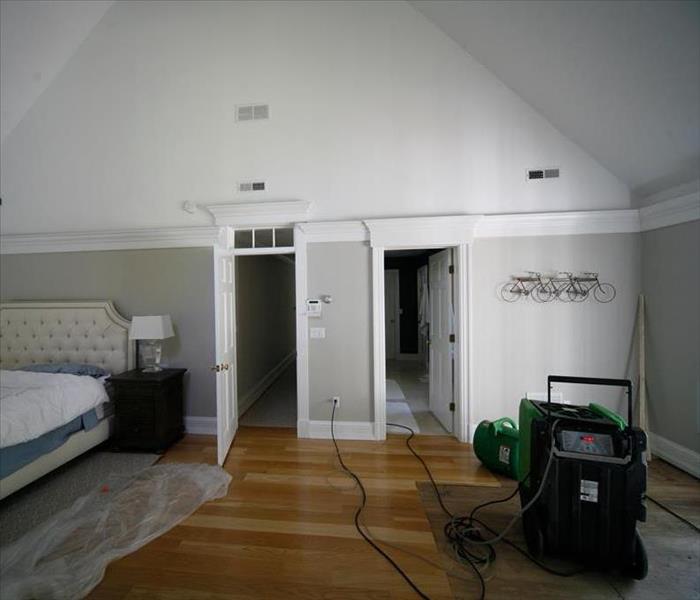Tips for Preventing Air Conditioner Water Damage
2/17/2017 (Permalink)
Most homeowners who enjoy cool and comfortable temperatures indoors throughout summer (thanks to their air conditioning system) don't realize that air conditioners can sometimes cause water damage, if not properly maintained. When working at peak efficiency, an air conditioner can collect 10 to 20 gallons of water daily. Ideally, this water drains off of the condensation coil into a collection pan and then is disposed of automatically into the sewer system. However, if the drain becomes clogged, and the unit produces more water than it can easily handle, the overflow of water can lead to damaged floors and carpeting, in addition to creating unhealthy deposits of mold.
A clogged drain line is often a major source of creating water damage, but other causes include excessive condensation that occurs when the unit is running around the clock, in addition to evaporator coils that may freeze up and then defrost on a regular basis. Because most of the unit is typically hidden from view, unless regular inspections take place, water damage can be occurring on a daily basis and accumulating into hundreds of dollars worth of damage.
One of the best ways to avoid air conditioner water damage is to change the HVAC air filter at least once a month. This gives a homeowner the opportunity to observe whether or not there is excessive moisture collecting on the condensation line. Ensuring that an AC unit has clean air filters also helps prevent the unit from overworking, a situation that causes freezing and then defrosting on the evaporator coils, leading to water damage. It's also important to regularly check to see that water is indeed flowing from the opening of the condensation line directly to the drain as it was designed to do, especially during periods of very high humidity in the atmosphere.
When installing an A/C condensation line, avoid using elbow connections if possible and have the line run in as straight a vertical direction as possible to facilitate water removal from the unit. It's a good idea to get a professional air conditioning repair service to clean the condensation line at least once a year or every six months if the AC system is used on a year-round basis. A professional plumbing service can also install a condensation pump to help ensure the free flow of excess water into the proper disposal drain. A repair technician may recommend installing a device known as a safety float switch, which will automatically shut down the power to an A/C unit whenever condensation builds up and there is a danger of water overflow.
Professional maintenance of your HVAC unit on an annual basis can also help to prevent water damage by checking the air filter, the condition of the condensation line, as well as the drains to eliminate any blockage, or other problems. Ask about having your air conditioner service technician apply an algaecide to your system to discourage build-up of debris in the drain lines in addition to prevent the growth of mold and mildew, which can spread throughout the HVAC system and pollute the air throughout the house.
Enjoy better efficiency and cooler air flow indoors throughout summer by following the steps above to ensure you get the most out of your HVAC and air conditioning units.






 24/7 Emergency Service
24/7 Emergency Service
